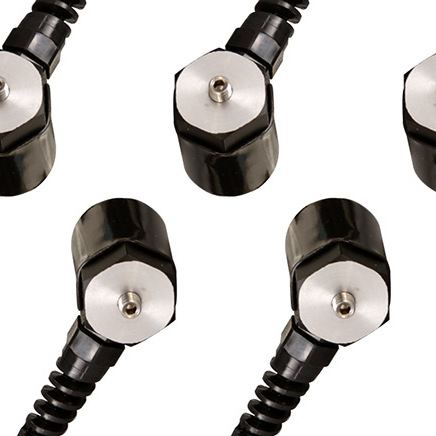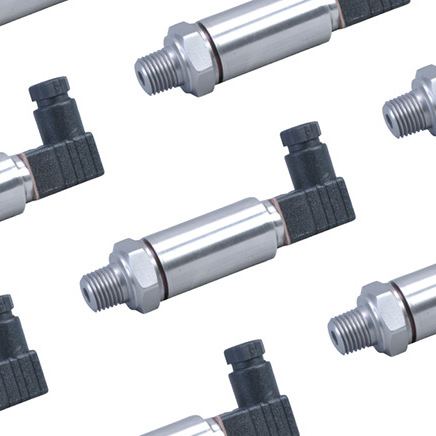The sky is probably the limit when it comes to what applications pressure transducers can be used in. To give you an idea, you can purchase a barometric pressure transducer to measure atmospheric pressures, hydraulic pressure transducers to measure pressure in your line, compound pressure transducers to measure positive and negative pressures, submersible transducers for level or depth monitoring, and many more special purpose pressure transducers.
Common Applications of Pressure Transducers
Pressure transducers are of the greatest utility for industrial and laboratory data acquisition and control applications. While the number of applications are almost as limitless as the types of pressure transducers, here are some of the most common applications our customers use pressure transducers for:
- Measuring inlet, outlet or system pressure in engine test setup
- Measuring pressure drops in a line for preventive maintenance
- Measuring fluid height or level in tanks
- Measuring the pressure of slurry/slush using a flush diaphragm pressure transducer
- Sanitary pressure transducers in the bio or pharmaceutical industry.
Strain gage transducers are available for pressure ranges as low as 3 inches of water to as high as 200,000 psig (1400 MPa). Inaccuracy ranges from 0.1% of span to 0.25% of full scale. Additional error sources can be a 0.25% of full scale drift over six months and a 0.25% full scale temperature effect per 1000F.
In this article, how to understand a presure transducer specifications is explained.
10 Applications for Pressure Transducers
Measuring the level of water in a tank with a pressure transducer
There are multiple ways to measure the water level in a tank, including:
- Using a submersible pressure transducer with a submersible cable that will reside near the bottom of the tank to measure the water pressure above it.
- Using a gauge pressure transducer in an open system underneath the bottom of tank or on an output line to measure the weight of the water to the top of the tank.
- Using a differential pressure gauge in a closed system to measure the pressure trapped between top of the tank and the liquid.
Isolating a water pipe leak with a pressure transducer
Multiple pressure transducers can be attached to pipes either above or below ground to help detect a break or leak in a pipe. The precise location of the leak is indicated by the transducer that is showing the largest drop in pressure. A wireless pressure transducer also makes it possible to remotely monitor for leaks.
Identifying a gas leak with a pressure transducer
To detect a gas leak, you will need a reference pressure against which to measure the pressure that is going into the tank. If the pressure goes down, the output will go up, indicating the presence of a leak.
Monitoring gas pressure with a pressure transducer
When non-combustible gas is stored in a tank, a pressure transducer can be used to measure the pressure and how that pressure might be affected by environmental factors like heat from the sun or cold temperatures. If measuring a combustible gas, you will need to use a transducer built with an explosive-proof housing or a hazardous pressure transducer that is certified safe to use with explosive gases.
Measuring pump pressure with a pressure transducer
There are numerous applications where it is necessary to know the pressure a pump produces. The size of the pump will determine the size of the pressure transducer required. For very small pumps, you will need to use a micro pressure transducer. For bigger pumps, a regular pressure transducer will work. However, in a larger pump there is some concern of water hammer, which can damage a pressure transducer. To avoid this issue, for larger pumps you can move the pressure transducer downstream to allow the force of the pump to even itself out before it reaches the transducer.
Measuring pressure in a high temperature environment with a pressure transducer
In some environments you will need to measure the pressure of a gas or fuel at extremely high temperatures. To protect the pressure transducer against these high temperatures, you will need to apply a siphon effect, where the transducer is moved away from the process and the fluid (liquid or gas) first runs through a section of metal pipe to dissipate the heat of the media being measured. The larger the tube used in the siphon, the shorter the distance can be between the process and the pressure transducer.
Monitoring flow rates with a pressure transducer
Differential pressure transducers are one of the most common ways to measure flow rates. The process requires a primary element, such as an orifice (plate) or venturi tube. This element creates a pressure drop by creating a restriction in the pipe. The pressure drop is measured by the differential pressure transducer.
Taking Baghouse measurements with a pressure transducer
Differential pressure transducers can be used to measure the different pressures on both sides of a large filter bag, known as a baghouse, which is used to clean particulates from the air brought out of a factory. As a bag collects particulates from the filtering process, the differential pressure increases across the bag because less air is able to get through the dirty filter bags. The clean air is sent to air conditioners and sent back to the factory, and the filter bags are replaced when needed.
Providing research and development with a pressure transducer
Many pressure transducers are found in automotive, air craft, and other manufacturing test stands. Anywhere you need to measure water pressures, fuel pressures, or air pressures on cars, planes, and other manufactured products, you will find test stands.
Maintaining pressure in food and beverage lines with a pressure transducer
Keeping the bottle filling apparatus with product is a key concern for plants and farms who deal with producing drinking materials for the public. Brewing and dairy applications use special sanitary pressure transducers to measure the pressure in bottling lines.
Pressure transducer for high temperature steam
Pressure transducers for high-temperature steam are devices used in setups where normal pressure transducers fail to operate because of the extreme temperatures. Normal-pressure transducers are sensitive to temperature after a certain point due to the expansion of internal parts caused by the rise in temperature. Such changes can cause errors in the output. Normal-pressure transducers are commonly rated for temperatures between 51° to 93° C.
However, high-temperature pressure transducers are specifically designed to handle high temperatures of the steam. They usually use a piezoelectric core for the measurement of pressure, making them resistive to high temperatures. There are pressure sensors that can measure pressure at temperatures well above 1000°C. However, sensors for such extreme cases are used only for short-term measurements with intervals in between to cool off the sensor.
- What is a pressure transducer?
- How do pressure transducers work?
- Pressure sensor vs transducer
- Custom pressure transducers
- Pressure transducers FAQ
- Selecting a pressure sensor
- How to specify
- Installing a pressure transducer
- Troubleshooting
- Selecing an amplifier
- Selecing a controller
- Selecing a data logger


